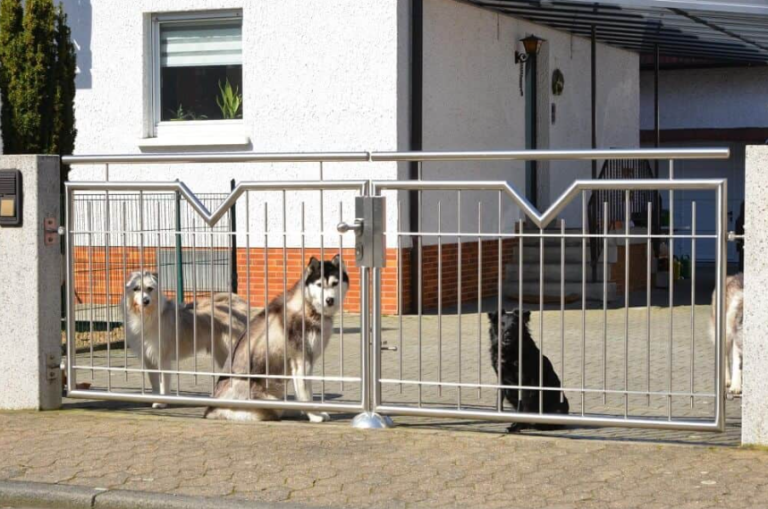How To Attract Media Attention at Trade Shows
Booking your booth, nailing down the display, and packing your best sales pitch, and now you think you are all set? No, certainly not! Next comes the part that can move the needle: getting your brand noticed by the media. Because no matter how flashy your booth is, if you want serious exposure, you need to attract media attention. And not just any attention. The right kind, from the right people, for the right reasons.
Why Media Attention Matters More Than Ever
Media coverage at trade shows isn’t just a nice-to-have; It is what can turn your trade show investment into real momentum. Good press can land you in front of thousands of people who aren’t even attending the show. It builds credibility. It gets people talking. And sometimes, it’s the difference between a slow burn and a breakout moment for your product or brand.
But media attention doesn’t happen by accident. You don’t show up and hope the press finds you. You go after it. And you do it with a clear plan.
The Reality of Trade Show Media Outreach
Here’s the thing. The media folks covering trade shows are busy. They are flooded with pitches. Honestly, their inboxes appear like a discount bin, stuffed, messy, and hard to manage. Trade show success begins with media outreach that is crisp, clear, and sharp, along with being thoughtful and time-savvy.
In other words, it simply means shifting from spray-and-pray press releases to real relationship-building, before, during, and after the event.
Step 1: Do Your Homework Before the Show
If you want to attract media attention, you need to know who’s covering the show. Most trade shows publish a media list or have a press registration section. That’s your starting point.
Study the list. Look up past articles from those journalists or outlets. See what they have written about before. Are they into product launches? Tech innovation? Industry trends? Find out, because a reporter covering market trends probably doesn’t care about your booth giveaway.
Make your own targeted list of media contacts who would actually care about your story. This simple prep step is what separates the good trade show press tips from the ones that fall flat.
Step 2: Craft a Pitch That Actually Gets Read
Here’s where a lot of people blow it. They write a generic, formal press release and send it to everyone on the list. That’s a great way to get ignored.
Instead, send a short, personalized pitch. One that says:
- Who you are
- What makes your story interesting or timely
- Why this reporter should care
- How can you assist in any way to make their job easier
It’s better to keep it under 200 words. Do remember to use a subject line that sounds from the heart, like “New Launch at (show name), you might want to see” or “Spotted your article on (topic), want a quick preview?
And don’t wait until the last minute. Reach out two or three weeks before the show. If you are wondering how to get press at events, this is it. Make it easy for the press to see why your story matters before they get buried in event coverage.
Step 3: Be Press Ready at Your Booth
You have done the homework. You have sent the pitch. Now you need to back it up when the media shows up.
That means:
- Having a clear, simple story you can tell in 30 seconds
- Prepping your booth staff so they know who the media are and how to talk to them
- Keeping media kits handy (digital or printed) with press releases, product sheets, contact info, and high-res images
- Having someone on-site who can speak on record and knows how to stay on message
Attracting media attention isn’t just about getting them to stop by. It is about giving them what they need to write a good story fast.
Step 4: Don’t Just Talk: Show
Reporters are looking for things their readers haven’t seen yet. That’s your chance to show, not just tell.
Give them a quick demo. Offer a sneak peek. Let them try your product if possible. Make your pitch visual and hands-on.
Media coverage at trade shows often comes down to moments like these. A great live demo or product reveal beats a printed handout every time.
A great pitch needs a great booth. Get in touch with Vivid Exhibits to create a display that stands out to the press and prospects alike.
Step 5: Follow Up Without Being Annoying
Let’s be real, trade shows are not only hectic for exhibitors, but it is equally tiring for media as well. If a journalist said they’d stop by and didn’t, or if they came by and seemed interested, follow up after the show.
Keep it short, crisp, and accurate. “Thanks for staying back. Here’s a quick recap of what we discussed. Let me know if you’d like more info or images.”
Or, if they missed you. “I know the show was packed. Happy to give you a quick virtual walk-through if you are still covering post-show news.”
This part is key. Following up can often be the difference between getting coverage and being forgotten. But don’t badger them. Respect their space.
Step 6: Make Yourself Newsworthy
If you want press, you have to be in the news. That might mean timing your product launch to happen at the show. Or releasing new research. Or partnering with someone noteworthy.
Whatever it is, make sure it is something people will want to talk about.
Some of the best trade show media outreach isn’t just about a product. Sharing interesting insights, following a fad, and solving problems with ease are other aspects it accommodates. Such stories get picked up sooner than you can even imagine.
<h2>Step 7: Use Social Media as a Sidekick
This is undeniable that nothing can replace a well-organized media coverage at trade shows, not even social media. But it can surely boost your visibility and engagement online.
Make it interesting by using unconventional methods like posting a fun video of “behind-the-scenes”. Tag relevant media outlets or journalists, but don’t spam them. Use the event hashtag.
Sometimes, the media find stories through social posts, especially if you are showing something unique and trending.
But again, keep it authentic. A desperate “Hey @journalist, come see us!” tweet won’t help. Genuine updated with smart tagging might.
<h2>Step 8: Be Available After the Show
Your trade show press tips shouldn’t stop when the booths come down.
Be ready to answer follow-up queries, send images, or give quotes after the event. Sometimes stories get written days or even weeks later.
Attracting media attention is about playing the long game. If a journalist knows you are reliable and helpful, they are more likely to come to you next time.
Step 9: Build Relationships, Not Just a Contact List
This is the part most people skip. Media relationships are like any other relationship. They take time and trust.
Stay connected with key media even when you are not pitching. Comment on their stories. Share relevant news. Congratulate them on great pieces.
When you think about trade show media outreach, think beyond the event. That’s how you get known as a source worth covering, not just another face in the crowd.
Bonus Tip: Know What Not To Do
If you want a quick list of how not to attract media attention, here it is:
- Don’t send mass emails with no personalization
- Don’t overwhelm with jargon or hype
- Don’t waste their time with non-news
- Don’t ignore them at the booth because you are too busy
- Don’t follow up three times in a day
Trade show press tips work when they are smart, respectful, and helpful, but not when they are pushy.
The Bottom Line on How To Attract Media Attention
Attracting media attention at trade shows comes down to one thing. Effort. Not flashy gimmicks. Not hoping for the best. Real effort before, during, and after the show.
Do your research. Craft your pitch. Be ready to deliver a great story on the spot. Follow up the right way. Build relationships that last.
That’s how to get press at events. That’s how media coverage at trade shows turns from a maybe into a sure thing. And that’s how you make your trade show investment really count.
Take your trade show presence from ordinary to unforgettable. Get in Touch Today for expert exhibit design and strategy.






